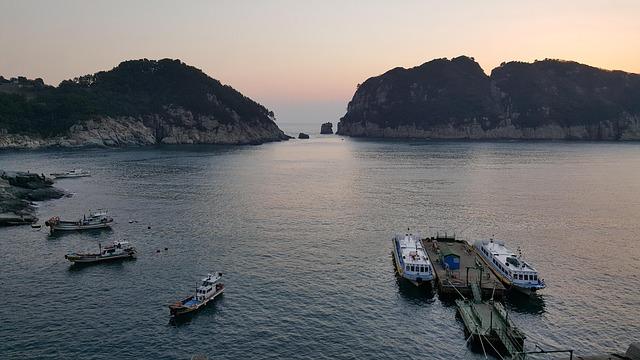The Bureau of Educational and Cultural Affairs (ECA) of the U.S. Department of State plays a pivotal role in shaping international relations through people-to-people diplomacy. By fostering educational exchanges, cultural programs, and mutual understanding between the United States and countries around the world, the ECA serves as a key instrument in promoting global cooperation and goodwill. Leveraging diverse initiatives such as the Fulbright Program and the International Visitor Leadership Program, the bureau seeks to bridge cultural divides and strengthen diplomatic ties in an increasingly interconnected world. This article explores the ECA’s mission, key programs, and the impact of its work on global education and cultural exchange.
Bureau of Educational and Cultural Affairs Expands Global Exchange Programs to Foster International Understanding
The Bureau of Educational and Cultural Affairs (ECA) has announced a significant expansion of its global exchange initiatives aimed at deepening cross-cultural dialogue and mutual respect among nations. This strategic growth comes at a pivotal moment when international collaboration and understanding are more vital than ever. ECA’s newly broadened programs will include diverse opportunities for students, educators, and professionals to participate in cultural immersion, leadership training, and collaborative projects across continents.
Key features of the expanded exchange programs include:
- Increased scholarship offerings targeting underrepresented communities worldwide
- Enhanced virtual exchange platforms to bridge geographic and economic gaps
- Expanded partnerships with universities, NGOs, and cultural institutions
- Focus on STEM, arts, and civic engagement to equip participants with diverse skills
| Region | New Program Count | Target Participants |
|---|---|---|
| Asia-Pacific | 15 | Students & Educators |
| Sub-Saharan Africa | 10 | Professionals & Youth Leaders |
| Europe | 8 | Cultural Ambassadors & Artists |
| Latin America | 12 | Emerging Scholars & Innovators |
Innovative Initiatives Enhance Cultural Diplomacy and Professional Development Opportunities
The U.S. Department of State’s Bureau of Educational and Cultural Affairs is pioneering dynamic programs that bridge global communities through immersive cultural exchanges and cutting-edge professional development. By fostering dialogue across cultures, these initiatives not only enhance mutual understanding but also equip participants with vital skills to thrive in a rapidly evolving international landscape. Recent projects include virtual mentorships connecting emerging leaders with experts worldwide and innovative cultural festivals showcasing local art, music, and traditional practices, elevating the global appreciation of diverse heritages.
Emphasizing accessibility and impact, the Bureau’s strategies also incorporate robust training workshops, collaborative research projects, and international networking opportunities. These programs empower participants to:
- Develop cross-cultural communication and leadership capabilities
- Access global professional networks and resources
- Create sustainable collaborations across educational and artistic sectors
| Initiative | Focus Area | Impact |
|---|---|---|
| Global Arts Exchange | Creative Collaboration | 100+ Artists Engaged |
| Virtual Leadership Labs | Professional Growth | 500+ Emerging Leaders |
| Cross-Border Research Grants | Academic Innovation | 75 Projects Funded |
Key Challenges and Strategies for Maximizing Impact in Educational Outreach
Educational outreach initiatives often grapple with limited resources and variable community engagement, which can hinder their overall effectiveness. To overcome these hurdles, organizations must focus on fostering sustainable partnerships and leveraging local networks. Tailoring program content to reflect the cultural and linguistic diversity of target audiences increases relevance and encourages participation. Additionally, integrating technology—such as mobile learning platforms and virtual exchanges—can bridge geographic gaps and broaden access.
Effective strategies for maximizing impact also include rigorous evaluation and data-driven adjustments to program delivery. Key focus areas involve:
- Continuous feedback loops: Engaging stakeholders regularly to refine outreach approaches.
- Capacity building: Empowering educators and community leaders with training and resources.
- Inclusive engagement: Ensuring programs reach underrepresented groups.
| Challenge | Strategy | Expected Outcome |
|---|---|---|
| Resource Constraints | Strategic partnerships and grants | Expanded reach and sustainability |
| Diverse Audience Needs | Customized culturally relevant programming | Increased engagement and impact |
| Monitoring & Evaluation | Data-driven feedback and continuous improvement | Higher program effectiveness and accountability |
Recommendations for Strengthening Partnerships and Increasing Accessibility in ECA Programs
Enhancing collaboration with diverse stakeholders remains a critical lever for expanding the reach and impact of ECA initiatives. It is essential to foster inclusive partnerships that span government agencies, educational institutions, non-governmental organizations, and private sector entities. By creating strategic alliances grounded in shared goals, the Bureau can unlock new resources and innovative approaches to program delivery, particularly in underserved communities. Emphasizing transparency and regular communication channels will promote trust and facilitate the co-creation of adaptive solutions to meet evolving global challenges.
Improving accessibility involves a multifaceted approach that addresses physical, economic, and digital barriers. Key recommendations include implementing user-friendly application platforms and offering multilingual support to engage a broader audience effectively. Additionally, supporting local capacity-building through training and technical assistance ensures sustainable engagement. The following bullet points summarize actionable steps:
- Expand digital outreach: Utilize social media campaigns and virtual information sessions to increase program visibility.
- Enhance scholarship equity: Allocate resources that prioritize applicants from marginalized and economically disadvantaged backgrounds.
- Strengthen local partnerships: Work collaboratively with community-based organizations for targeted recruitment and support.
- Provide accessible resources: Ensure all program materials meet ADA compliance and incorporate assistive technologies.
In Conclusion
In closing, the Bureau of Educational and Cultural Affairs remains a pivotal force in advancing U.S. diplomacy through education and cultural exchange. By fostering mutual understanding and global partnerships, the Bureau not only enriches the lives of participants but also strengthens international ties critical to addressing today’s global challenges. As the world continues to evolve, the Bureau’s commitment to building bridges across cultures will undoubtedly play an essential role in shaping a more connected and cooperative future.




